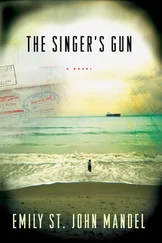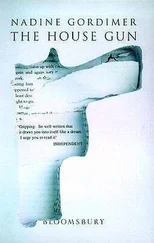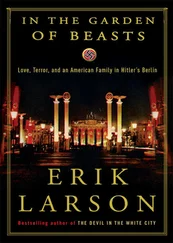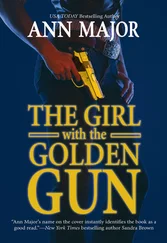Keeping her daughter safe from the family’s guns, Collins said, “is a real fear for me.” But Quigley’s course, she added, made her more confident. “I’m more aware now of where [the gun] is all the time. And making sure it’s in a safe place all the time.”
But would she always know exactly where it was?
“I’m sure gonna try. I can’t say that I’ll always, but since that course I’ve been very aware of it. I like to feel like I’ll always be aware of it.” Once, however, she left the gun in her car, with the car unlocked but in the garage. “That kind of frightened me.”
When her daughter is older, Collins said, “we’re going to take her out, show her how it works and what it can cause, and that way make her less curious about it—I think that’s why a lot of children use them, out of curiosity.” She thought she might follow Paxton Quigley’s suggestion of bringing along a melon to demonstrate the damage a handgun can do to the human head, an idea that evokes the practice sessions of the would-be assassin in Frederick Forsyth’s Day of the Jackal . In Armed & Female Quigley wrote, “Once a child understands how a gun operates and has heard the sound of a gunshot and witnessed the potential damage, he or she will have a different view of a gun and will gain respect for it.”
Dr. Kellermann, the Emory University researcher, called this idea “well-intended but hopelessly naive.” Parents overestimate the good sense of their children and their ability to resist outside pressures, he said. “Teaching a child respect for a gun doesn’t change the child’s willingness to use it if he’s depressed, if he just failed a test that he felt the rest of his life depended on, or just broke up with his girlfriend or he’s mad at his best friend. Tragedies of this kind are played out in this country on almost a daily basis.”
Others, however, including the NRA and Quigley, argue that the low annual death toll from accidental shootings proves how safe gun ownership is in America. A 1991 study by the U.S. General Accounting Office reported that in 1988 there were 1,501 unintentional shooting deaths; 277 of the victims were children fifteen years old or younger. This is tragic, the gun camp concedes, but not a bad showing considering that half of America’s households are thought to possess one or more guns.
Proponents of this view neglect to mention the number of nonfatal injuries that occur in accidental shootings. The GAO began studying firearms accidents in order to gauge how many lives could be saved each year if guns were required by law to include loading indicators, magazine safeties, and other safety devices currently not routinely installed on guns. (A loading indicator provides a visual warning that a cartridge is positioned in front of the firing pin and ready to fire. A magazine safety disables an auto-loading pistol the moment you pull the ammunition magazine from the base of the grip. Mechanical logic might lead you to assume that when you remove the magazine from a pistol, you unload the gun and render it safe; in fact, a cartridge may be left in the chamber.) Faced with the dearth of information on nonfatal gunshot injuries, the GAO’s investigators did some primary research of their own. They discovered that police typically do not keep such records. Nonetheless, they managed to find ten major police departments that did. Using the records from these departments, the GAO investigators studied 532 accidental shootings that occurred in 1988 and 1989 and found that only five had resulted in death, for an injury-to-death ratio of 105 to 1. The survey sample included records from the Dallas police department, which had recorded only one accidental shooting death but 248 injuries.
The GAO report cautioned that the survey sample, limited by the lack of available injury data, was hardly representative; the 105-to-1 ratio could not be projected to the country as a whole. The report noted, however, that this ratio fell in line with others reported by the National Safety Council. The overall ratio of injuries to deaths for all accidents of all kinds in America was 94 to 1; for household accidents, 151 to 1. If the 105-to-1 ratio were indeed accurate, it would indicate that 157,600 accidental, nonfatal gunshot injuries occur each year. Even if one excludes Dallas as a statistical outlier, the ratio comes out to seventy injuries for every death, or 105,070 nonfatal gunshot injuries each year.
A gun is an ego pump. It can give a fifteen-year-old mugger absolute power over anyone he encounters except perhaps another armed teenager. Likewise, police fear, a gun may impart a false sense of security to anyone who keeps one for self-defense, especially anyone who carries it outside the home. “There’s just so many what-ifs,” said Officer Joanne Welsh of the San Francisco police. The mother of a four-year-old, she won’t bring her service weapon into her house. “A weapon is really only good if that perfect situation you may have envisioned occurs.”
Guns certainly don’t make police officers feel safe, despite weeks of training and drilling in combat-shooting tactics. They know that just hanging on to a gun in an armed encounter can be difficult. From 1980 through 1989, 735 police officers nationwide were shot dead in the line of duty; 120 were killed with their own guns.
“The typical NRA line is, you can’t rape a .38,” said Col. Leonard Supenski, a Baltimore County firearms expert, who testified in a landmark civil suit arising from Nicholas Elliot’s shooting spree. “Well, that’s absolutely false. If the guy’s got his gun out first, you’re gonna lose. If you’ve got a .38 in your purse and the guy gets to it first, you’re gonna lose. If a guy attacks you from behind in the dark with the element of surprise, you’re gonna lose.”
Armed encounters involve a daunting array of split-second decisions. The self-defense shooter must first identify the target. Next, he must gauge the degree of threat. Does the intruder or assailant really pose a mortal danger? In broad daylight, these questions may have ready answers. But a self-defense shooting is most likely to take place under less than optimal conditions, with fear complicating the decision process.
Analysis of police shootings shows that a wild surge of adrenaline quickly impairs fine motor control, Supenski said. “You have tunnel vision, your eyes tend to focus on the threat, you see nothing else around you. Your auditory senses are diminished. It’s called auditory exclusion. You hear only what’s in front of you.”
One of the absurd myths of gunplay nurtured by television and Hollywood is the idea that during a gunfight one can actually count the number of bullets the other guy fired and thus know whether or not his gun remained loaded. Police officers involved in shootings often report never hearing the sound of gunfire.
Amid the confusion of sleep and the distortions of fear, an armed homeowner has yet one more crucial question to answer: What’s behind the target? A bullet that misses its target, or even one that strikes its target dead on, can continue traveling with enough momentum to pass through interior walls into adjacent bedrooms, even exterior walls into neighboring homes. A miss is likely. In gunfights, Baltimore County police officers miss with seven of ten shots fired, Supenski said. “If the cops miss—and these are the guys who had the training, the retraining, and the recertification—how much more so does somebody who buys a gun and sticks it in the drawer?”
Gun magazines feed America’s gun owners a steady diet of advice on how to behave during a gunfight, much of it written by police officers from small-town departments no one has ever heard of and where gun battles are few and far between. Typically, these stories fail to discuss the emotional aftermath of an armed confrontation. Big-city police departments know the psychic toll can be devastating. In Boston, for example, the police department established a “Shoot Team,” composed of officers who have survived shoot-outs, which gathers after each new incident to help the officers involved come to grips with the terror they felt during the confrontation and the emotional upheaval they experienced afterward.
Читать дальше








![Ричард Деминг - Whistle Past the Graveyard [= Give the Girl a Gun]](/books/412176/richard-deming-whistle-past-the-graveyard-give-t-thumb.webp)



